England is the largest country in the United Kingdom, bordered by Wales and Scotland. You may be familiar with England because of its longest reigning monarch, Queen Elizabeth. This beautiful country has a lot to offer for all travelers, including their pesky insects. Equivalent to many places around the world, England has some of the largest flying insects throughout the country. Before visiting this country, it is important to know which kind of flying insects you may encounter.
1. Hornet Robberfly
The scientific name for the hornet robberfly is Asilus crabroniformis, which is the largest fly in England. The Horney robberfly emerges between June and October. The fly is black and yellow with a body length of 2.5 centimeters. These creatures feed on dung beetles, bees, and grasshoppers. Although, these creatures look scary, they are harmless to humans.
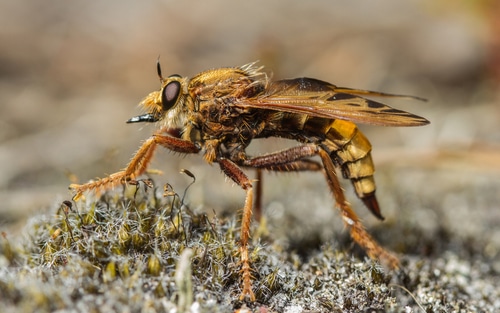
These creatures may sound scary; however, they are harmless to humans.
©thatmacroguy/Shutterstock.com
2. Cockchafers
The cockchafers, Melolontha melolantha, are normally seen in south England. This large beetle is between 2.5 and 3 centimeters in length. Light attract these insects and they make a noisy hum when flying. This bug is also known as the May bug.
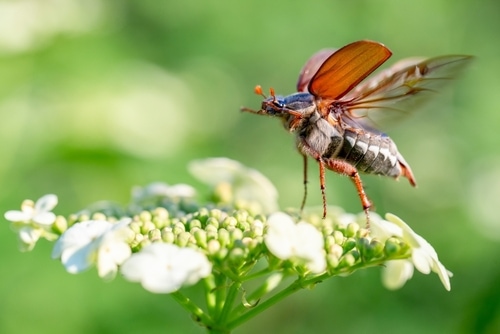
: In 1574, the cockchafers emerged in large numbers in Severn Valley disabling their watermills!
©Ihor Hvozdetskyi/Shutterstock.com
3. Ruby Tailed Wasps
The ruby tailed wasps is also known as the “cuckoo wasp” or the “emerald wasp”. These solitary insects emerge between April and September. The shiny blue-green insect can grow up to 5 millimeters. This beautiful wasp do not sting humans, although they have long stingers.

The scientific name for this creature is
Chrysis ignita.
©Ed Phillips/Shutterstock.com
4. Heath Potter Wasp
The heath potter wasp are in the Heathlands of southern England between late April and mid October. These wasps make mud pots to collect small caterpillars and paralyze them for when their eggs hatch. Making clay pots can take between 2 to 3 hours for the wasp. The scientific name for the heath potter wasp is Eumenes coarctatus.
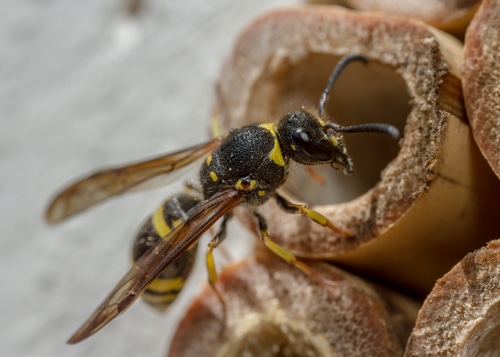
The heath potter wasp are glossy black with yellow markings and a very narrow waist.
©thatmacroguy/Shutterstock.com
5. Dark-Edged Bee Fly
The dark-edged bee fly, Bombylius major, live in southern England, the Midlands, and Welsh lowlands between March and May. The eight centimeter fly has a long tongue sticking out of its head for drinking nectar. Although this fly mimics bees, it is actually a fly.
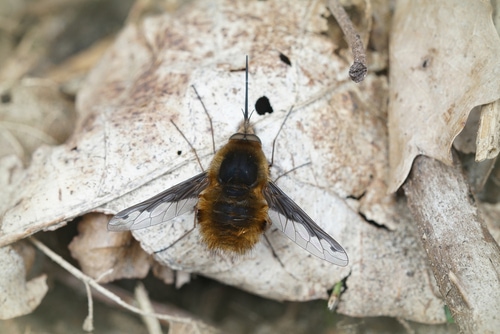
There are multiple species of the bee-fly; however, this specific fly can be distinguished by its dark colored wings.
©Wirestock Creators/Shutterstock.com
6. European Beewolf
The scientific name for this insect is, Philanthus triangulum, and grow up to 17 millimeters in length. This insect digs nests in sandy spots to hunt for honey bees. This solitary wasp can emerge between July and September.
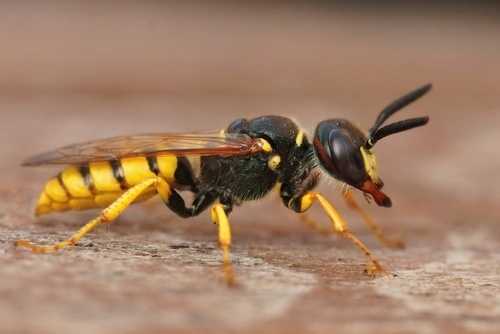
The European Beewolf is the bee killer of Europe.
©Wirestock Creators/Shutterstock.com
7. Large Red Damselfly
The 35 millimeter large red damselfly live and fly over England between April and July. This insect hangs around ponds, wetlands, and streams. The scientific name for this fly is Pyrrhosoma nymphula.
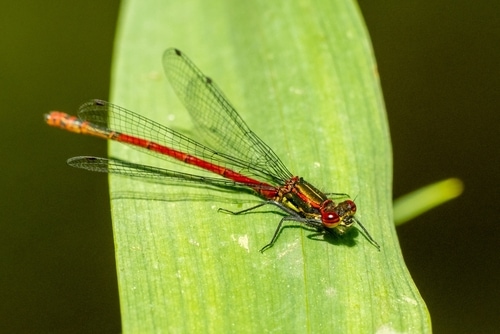
The large red damselfly has black legs, wings, and thorax along with red body.
©Keith Hider/Shutterstock.com
8. Marmalade Hoverfly
The scientific name for this fly is Episyrphus balteatus and is found in Britain. The fly is black with orange stripes and can grow up to 1.2 centimeters in length. If you are a gardner you will see these insects hanging around your garden looking for nectar. These insects are common all over Britain and are orange with black markings.
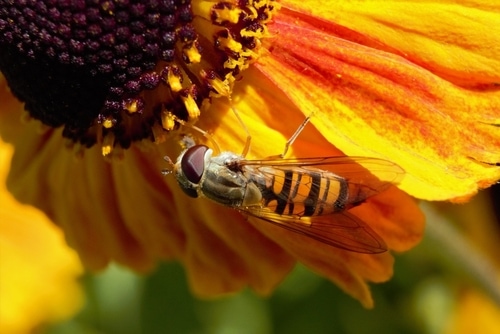
The Marmalade Hoverfly do not have stingers and are harmless to humans.
©David James Chatterton/Shutterstock.com
9. Emperor Dragonfly
The emperor dragonfly is Britain’s bulkiest dragonfly. The scientific name for this dragonfly is the Anax imperator. This dragonfly is bright blue and green and are 78 millimeters in length. Young emperor dragonflies are referred to as nymphs and can take up to 1 year to develop their wings. Once they are full winged adults, they only live for 10 days. This insect emerge between June and August around large ponds and lakes.

The emperor dragonfly gain speeds of 24mph when flying in the air.
©Denis Vesely/Shutterstock.com
10. The Dark Giant Horsefly
This fly can grow up to 5 centimeters in length and compare to the size of a queen bumblebee. This horsefly can is found in Britain. The dark giant horsefly will bite horses and cattle for a blood meal; however, they have made humans their victim as well. These type of flies are prone to transmitting diseases, but in Denmark, so far their has not been any evidence of this becoming in issue. If visiting ponds or lake, make sure to wear insect repellant or long sleeves.
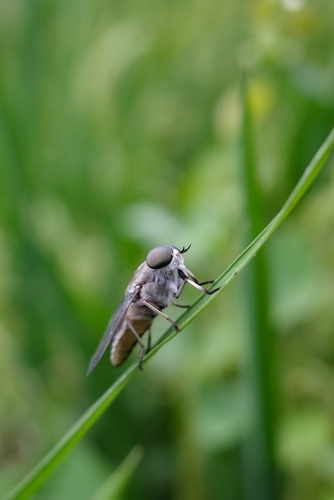
The scientific name for the dark giant horsefly is
Tabanidae.©Tompel/Shutterstock.com
I hope that after reading about some of the top flying insects in England have not caused you to not want to visit! If anything now that you know about their flying insects, this will encourage you to visit and observe these creatures! Some of these large flying insects are harmless to humans; however, wear insect repellant and protective long sleeves to be on the safe side. Any part of the world can make you second guess if you should visit, especially when not knowing what you can encounter. Always research places that you choose to visit so you can be safe and still be able to observe creatures native to certain parts of the world!
Thank you for reading! Have some feedback for us? Contact the AZ Animals editorial team.








